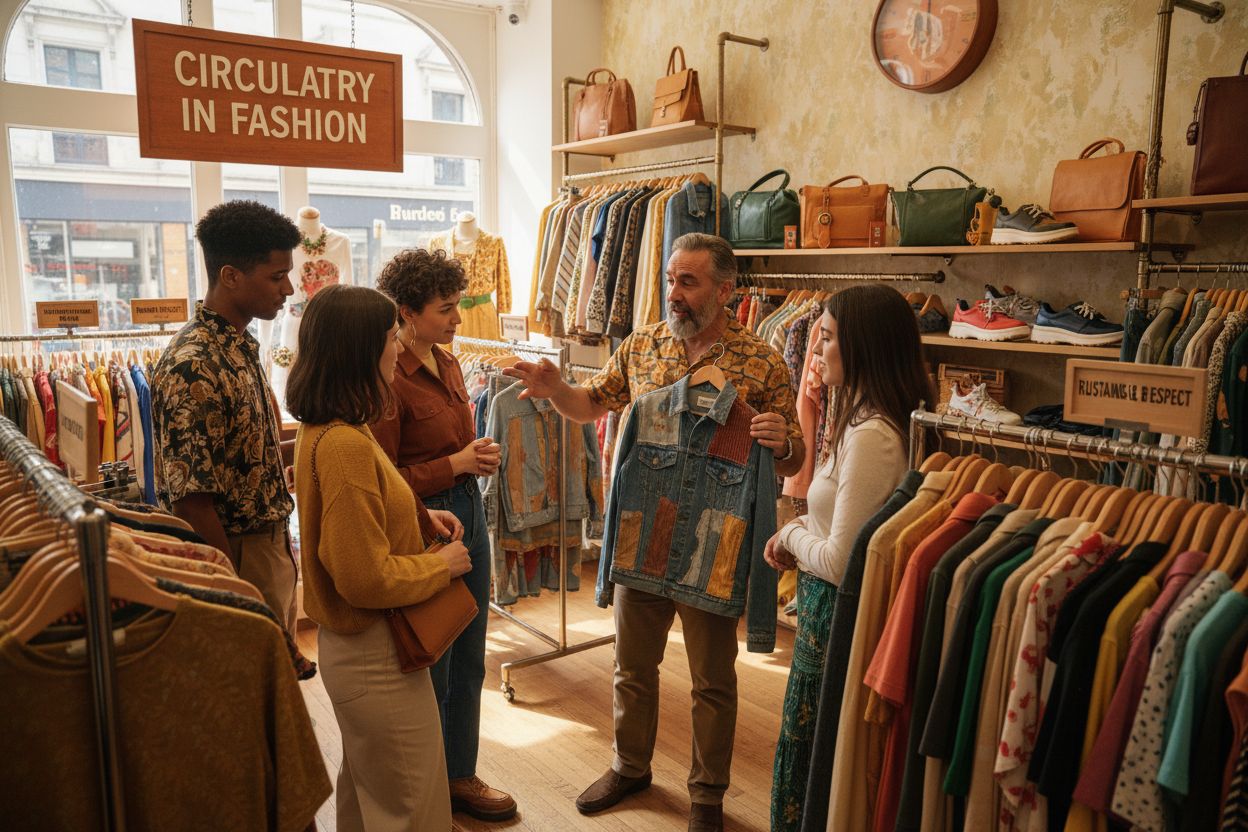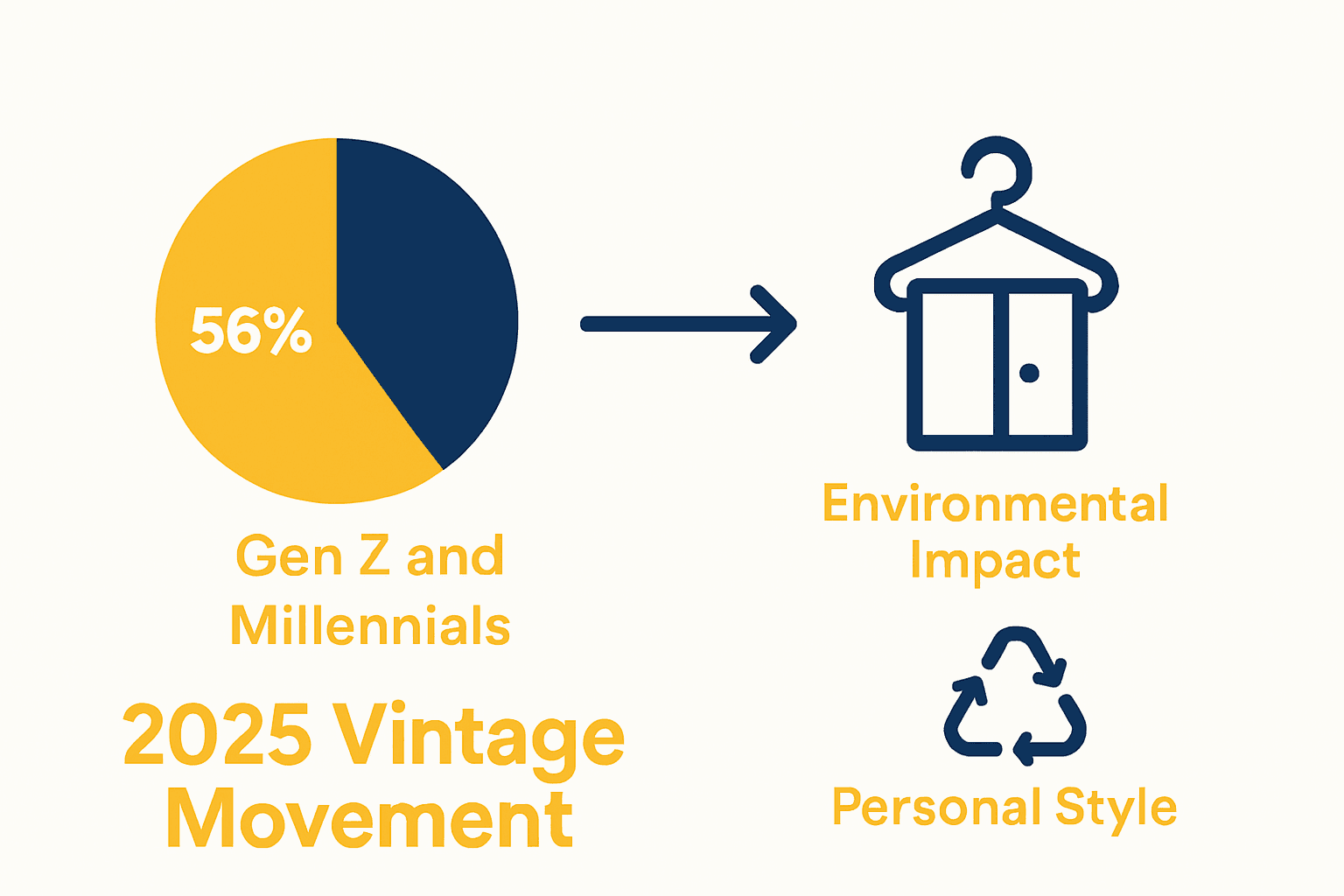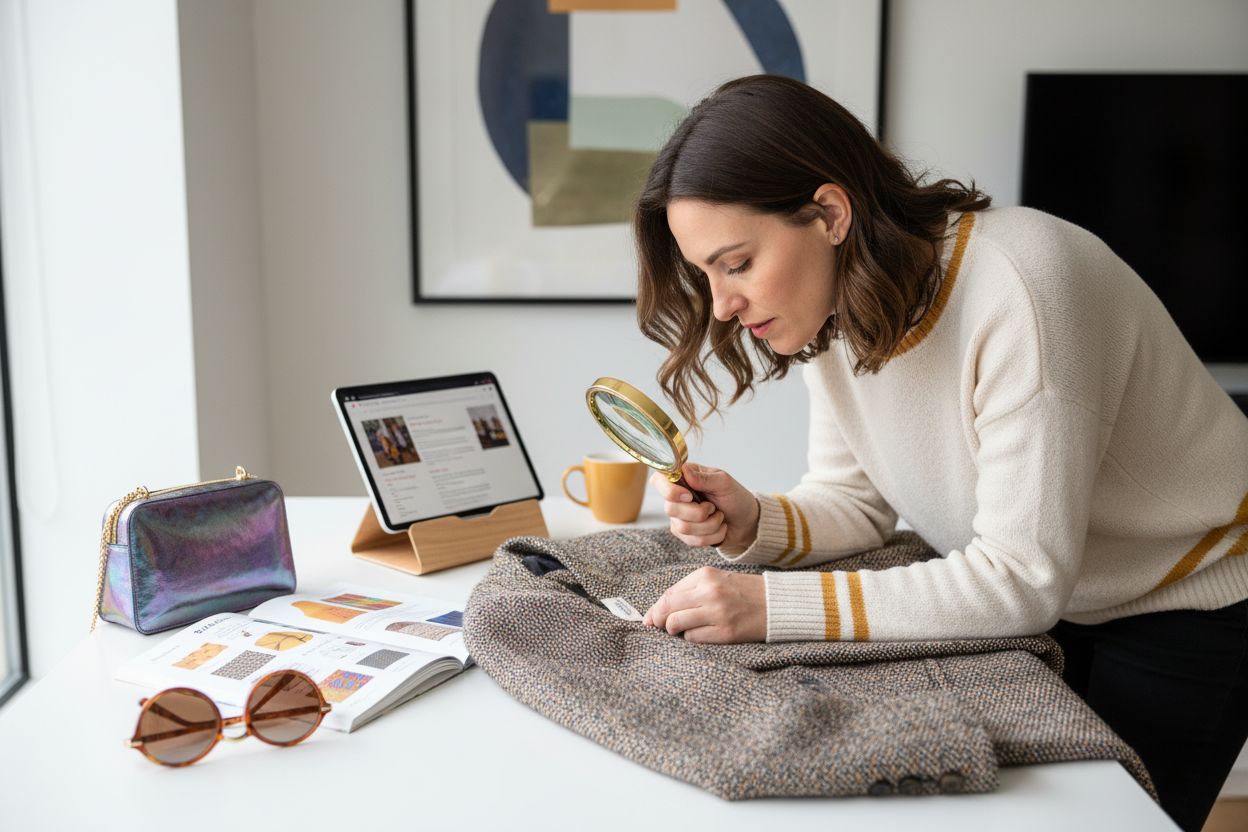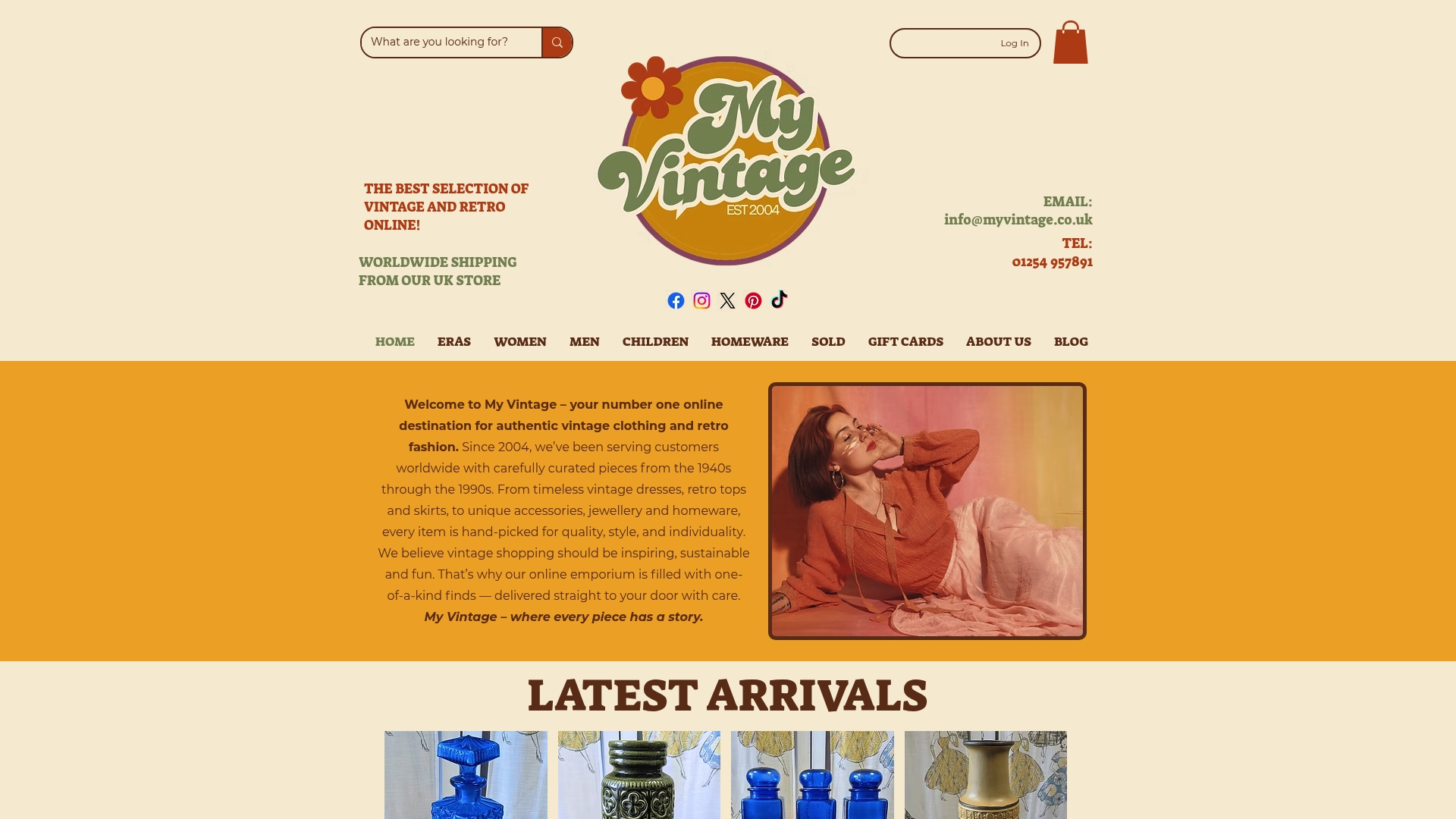Vintage Shopping Tips: Your Essential Guide
- Emma

- Oct 19
- 7 min read

Did you know that over two thirds of Gen Z and Millennials now shop second-hand clothing each year? Vintage shopping has become a powerful movement, fusing sustainable choices with personal style and real nostalgia. As demand rises, shoppers are searching for authentic, character-filled pieces that reflect their unique tastes.

This guide reveals how vintage fashion is reshaping what it means to be bold, eco-friendly, and expressive in 2025.
Key Takeaways
Point | Details |
Mainstream Movement | Vintage shopping has become a cultural movement focused on sustainability and personal expression, with significant participation from Gen Z and Millennials. |
Diverse Trends | The vintage fashion landscape showcases trends across decades, emphasising individuality and unique storytelling with each piece. |
Authenticity Matters | Identifying genuine vintage requires knowledge of historical markers and craftsmanship, essential for discerning true vintage from modern replicas. |
Sustainable Practices | Vintage shopping not only reduces waste but also promotes ethical consumption, highlighting the importance of supporting circular economies. |
Table of Contents
Defining Vintage Shopping in 2025
Vintage shopping has evolved dramatically, transforming from a niche hobby into a mainstream sustainable fashion movement. According to recent research from FashionUnited, an astonishing 69% of Gen Z and 67% of Millennials have embraced second-hand shopping in the past year, signaling a profound shift in consumer behaviour.
In 2025, vintage shopping is no longer just about acquiring old clothing—it’s a statement of individuality, sustainability, and personal style. The modern vintage shopper isn’t seeking pristine, untouched garments but instead values pieces with authentic character. As The Guardian reports, UK shoppers are increasingly drawn to ‘trashed-look’ vintage items that tell a story through their wear, stains, and unique distressing.
Key characteristics of vintage shopping in 2025 include:
Sustainability: Reducing fashion’s environmental impact
Authenticity: Valuing genuine, lived-in pieces
Individual Expression: Using vintage to create unique personal style
Historical Connection: Appreciating fashion’s cultural narratives
This isn’t just shopping—it’s a cultural movement that reimagines fashion as a form of personal storytelling and environmental consciousness. Read more about understanding vintage shopping trends to dive deeper into this fascinating world.
Popular Vintage Categories and Trends
Vintage fashion in 2025 is experiencing a spectacular renaissance, blending nostalgic aesthetics with contemporary style sensibilities. According to Vogue UK, this year’s trends showcase an extraordinary mix of theatrical and historical references, from Old Hollywood glamour to avant-garde archive pieces.
The landscape of vintage categories is incredibly diverse. Top Down Trading highlights several key trends defining 2025’s vintage scene:
Decade-Specific Highlights:
Y2K Revival: Low-rise and baggy denim making a bold comeback
'90s Grunge: Oversized flannel shirts and rebellious aesthetics
'80s Power Dressing: Structured silhouettes and bold statements
'70s Boho: Free-flowing, eclectic styles with natural fabrics
'60s Mod: Sharp, geometric cuts and minimalist designs
Here’s a comparison of popular vintage fashion trends by decade:
Decade | Signature Styles | Typical Features |
Y2K (2000s) | Low-rise denim Baggy trousers | Bold logos Playful accessories |
1990s | Grunge flannel Slip dresses | Oversized fits Layered looks |
1980s | Power suits Bold shoulders | Bright colours Statement jewellery |
1970s | Boho chic Maxi dresses | Flowy fabrics Natural textures |
1960s | Mod minis Geometric prints | Sharp lines Minimalist design |
Interestingly, the vintage market is moving beyond mere clothing—it’s about curating narratives. As our guide on vintage clothing trends suggests, each piece tells a unique story. Theatrical archive pieces like Christian Lacroix couture and ‘corporate drag’ featuring oversized '90s menswear suits are transforming how we perceive vintage fashion, turning clothing into wearable art and personal expression.
How to Identify Authentic Vintage Pieces
Authentic vintage pieces are more than just old clothing—they’re historical artifacts with unique stories and craftsmanship. According to Vintage UK, identifying genuine vintage requires a keen eye and understanding of specific historical markers.
Key authentication techniques involve examining multiple aspects of the garment. The British Style Society recommends focusing on several critical elements:
Vintage Authentication Checklist:
Label Details: Look for era-specific typography, “Made in Britain” stamps
Construction Quality: Inspect hand-sewn hems, metal zippers, robust stitching
Material Composition: Check for authentic fabrics like rayon, wool, vintage cotton blends
Aging Signs: Examine gentle wear, fabric patina, natural aging characteristics
Historical Markers: Verify era-specific care instructions and manufacturing techniques
Beware of counterfeits—they often reveal themselves through subtle inconsistencies like misaligned logos, poor stitching, or modern manufacturing shortcuts.

Learn more about identifying authentic vintage clothing to become a savvy vintage collector who can distinguish genuine historical pieces from modern replicas.
Sustainable and Ethical Buying Practices
Vintage shopping has emerged as a powerful sustainable consumption model, transforming how conscious consumers approach fashion and lifestyle choices. According to Fashion United, UK consumers are increasingly embracing second-hand items as an environmentally responsible alternative to mass-produced clothing, with younger generations leading this transformative trend.
The ethical appeal of vintage shopping extends far beyond environmental considerations. The Times reports that millennials are specifically seeking high-quality used goods that offer lower carbon footprints compared to contemporary manufacturing processes. This shift represents more than a trend—it’s a fundamental reimagining of consumption.
Key Sustainable Vintage Shopping Principles:
Reduce Waste: Extend clothing lifecycle
Lower Carbon Footprint: Minimise new production demands
Support Circular Economy: Promote reuse and recycling
Preserve Historical Craftsmanship: Celebrate traditional manufacturing techniques
Individualize Personal Style: Create unique looks without environmental compromise
Learn more about the advantages of sustainable fashion and discover how your vintage shopping choices can make a meaningful environmental impact. By choosing vintage, you’re not just buying clothing—you’re participating in a global movement towards more responsible consumption.
Pricing, Bargaining, and Value Assessment
Vintage shopping in 2025 has transformed from a simple transaction to a nuanced art of value recognition. According to Marie Claire, the market demonstrates extraordinary potential for smart investments. For instance, a vintage Chanel Timeless bag can be purchased for approximately £2,160 compared to its retail price of over £8,900—a compelling argument for understanding vintage pricing dynamics.
Pricing strategies have become increasingly sophisticated. Vogue highlights how curated vintage events are reshaping market perceptions, with exclusive sales creating unique opportunities for both buyers and sellers to negotiate value beyond traditional retail frameworks.
Key Value Assessment Principles:
Condition Evaluation: Assess wear, damage, and restoration potential
Historical Significance: Research item’s provenance and cultural context
Rarity Factor: Determine scarcity and collectible status
Designer Legacy: Understand brand reputation and historical importance
Market Trends: Monitor current vintage fashion demand
Discover more about understanding vintage value to become a savvy vintage investor who sees beyond price tags and recognises true aesthetic and historical worth.
Avoiding Common Mistakes When Vintage Shopping
Vintage shopping requires more than just a keen eye—it demands strategic knowledge and careful consideration. According to United Vintage, true vintage pieces are defined as items at least 20 years old, a critical distinction many novice shoppers overlook when curating their collections.
The Spruce emphasises the importance of patience and informed decision-making in vintage shopping. Rushing purchases can lead to expensive mistakes, poor fits, and unexpected restoration costs that significantly impact your investment.
Key Vintage Shopping Pitfalls to Avoid:
Authenticity Verification: Confirm piece is genuinely vintage, not recent second-hand
Precise Measurements: Always check specific item dimensions, not just vintage sizing
Condition Assessment: Thoroughly examine wear, potential repair needs
Fabric Care Research: Understand unique maintenance requirements
Impulse Control: Resist buying without careful consideration
Explore our comprehensive guide to vintage shopping and transform potential mistakes into confident, informed purchasing decisions. Remember: great vintage finds reward those who are patient, observant, and strategic.
Begin Your Authentic Vintage Journey With Confidence
Are you tired of the uncertainty that comes with vintage shopping? As highlighted in “The Essential Guide to Vintage Shopping Tips 2025,” modern shoppers face challenges such as spotting authenticity, avoiding impulse buys, and finding true value in every piece. If you want to embrace personal style while protecting both the environment and your wallet, My Vintage is your trusted destination for real, quality vintage finds.

Experience the difference of a genuine vintage emporium where every curated item is hand-picked to tell a story. Explore exclusive authentic vintage apparel, discover our trend insights and guides, and shop with peace of mind on a site dedicated to both individuality and sustainability. Make your next vintage discovery at My Vintage and bring timeless, eco-conscious style into your wardrobe today.
Frequently Asked Questions
What defines authentic vintage clothing?
Authentic vintage clothing is defined as items that are at least 20 years old, showcasing unique craftsmanship, historical significance, and characteristic signs of wear. To identify them, you should look for era-specific labels, high-quality construction, and signs of natural aging.
How can I practice sustainable vintage shopping?
Sustainable vintage shopping involves reducing waste by extending the lifecycle of clothing, minimizing your carbon footprint, and embracing the circular economy. By choosing vintage items, you’re participating in responsible consumption and preserving historical craftsmanship.
What are common mistakes to avoid when shopping for vintage pieces?
Common mistakes when vintage shopping include failing to verify authenticity, not checking specific measurements, neglecting to assess the condition of the item, and making impulsive purchases without proper consideration.
How should I assess the value of vintage items?
To assess the value of vintage items, consider the condition of the piece, its historical significance, rarity, designer legacy, and current market trends. Understanding these factors can help you recognize true worth beyond the price tag.
Recommended







Comments